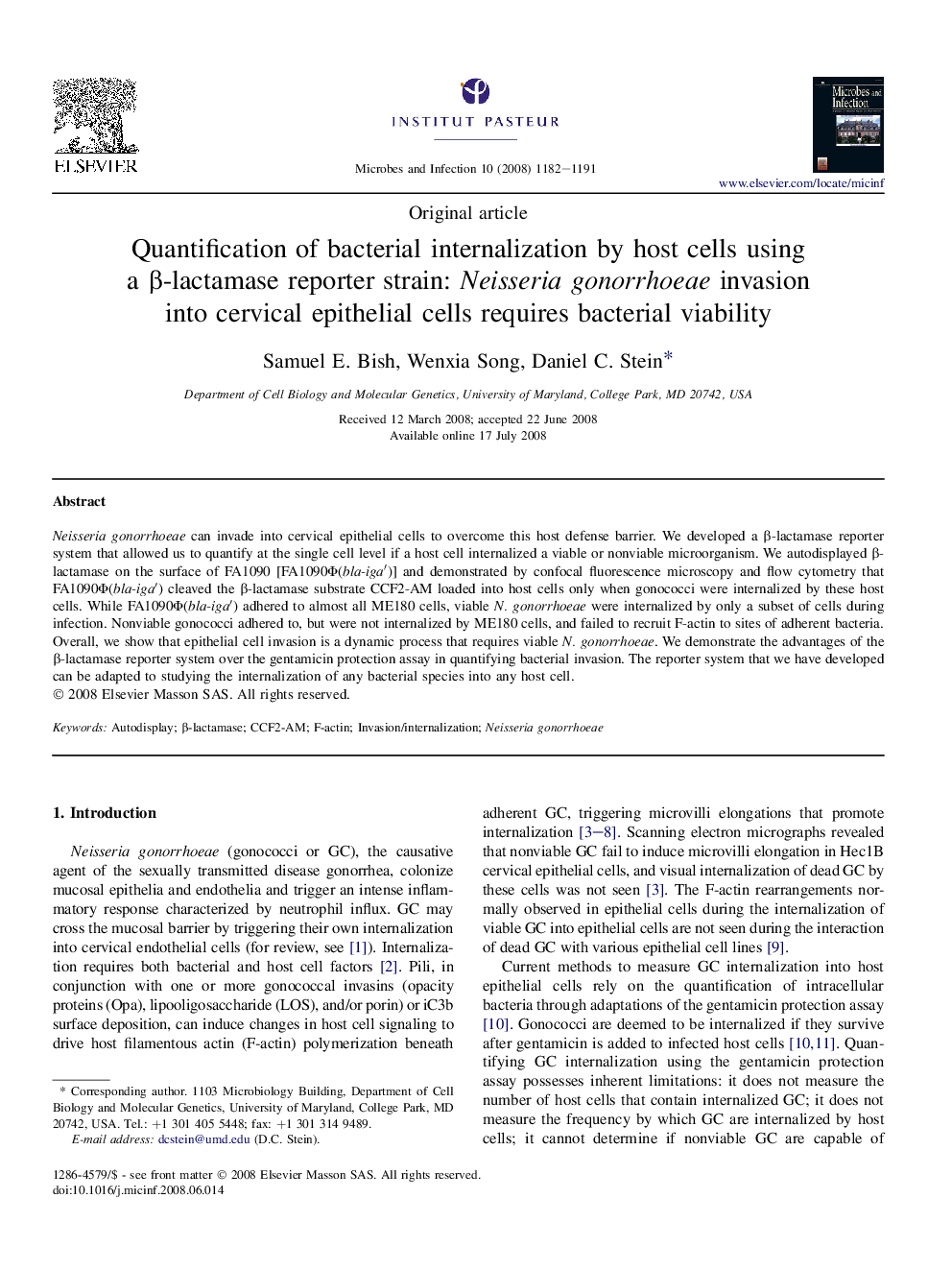| Article ID | Journal | Published Year | Pages | File Type |
|---|---|---|---|---|
| 3415680 | Microbes and Infection | 2008 | 10 Pages |
Neisseria gonorrhoeae can invade into cervical epithelial cells to overcome this host defense barrier. We developed a β-lactamase reporter system that allowed us to quantify at the single cell level if a host cell internalized a viable or nonviable microorganism. We autodisplayed β-lactamase on the surface of FA1090 [FA1090Φ(bla-iga′)] and demonstrated by confocal fluorescence microscopy and flow cytometry that FA1090Φ(bla-iga′) cleaved the β-lactamase substrate CCF2-AM loaded into host cells only when gonococci were internalized by these host cells. While FA1090Φ(bla-iga′) adhered to almost all ME180 cells, viable N. gonorrhoeae were internalized by only a subset of cells during infection. Nonviable gonococci adhered to, but were not internalized by ME180 cells, and failed to recruit F-actin to sites of adherent bacteria. Overall, we show that epithelial cell invasion is a dynamic process that requires viable N. gonorrhoeae. We demonstrate the advantages of the β-lactamase reporter system over the gentamicin protection assay in quantifying bacterial invasion. The reporter system that we have developed can be adapted to studying the internalization of any bacterial species into any host cell.
